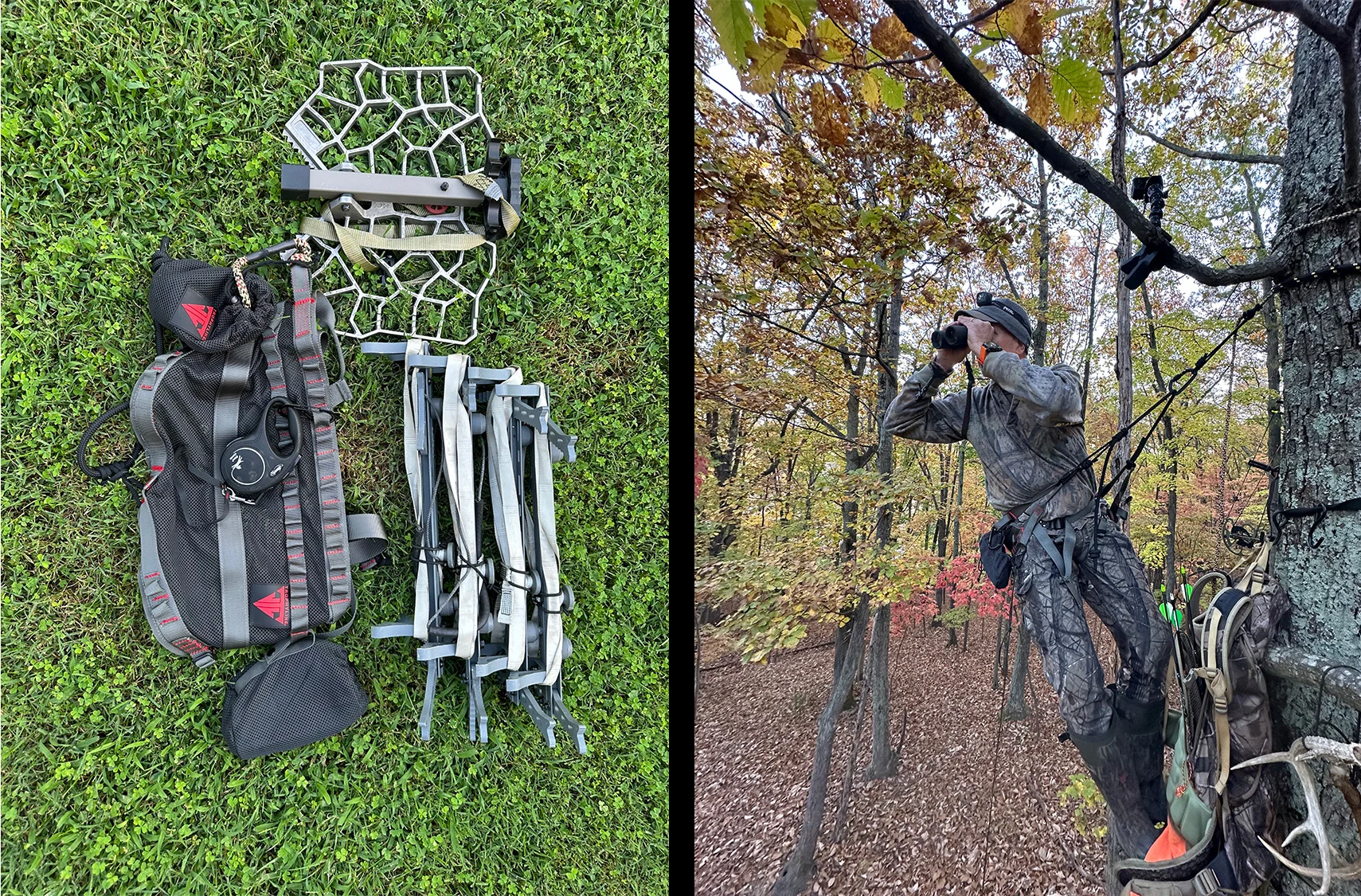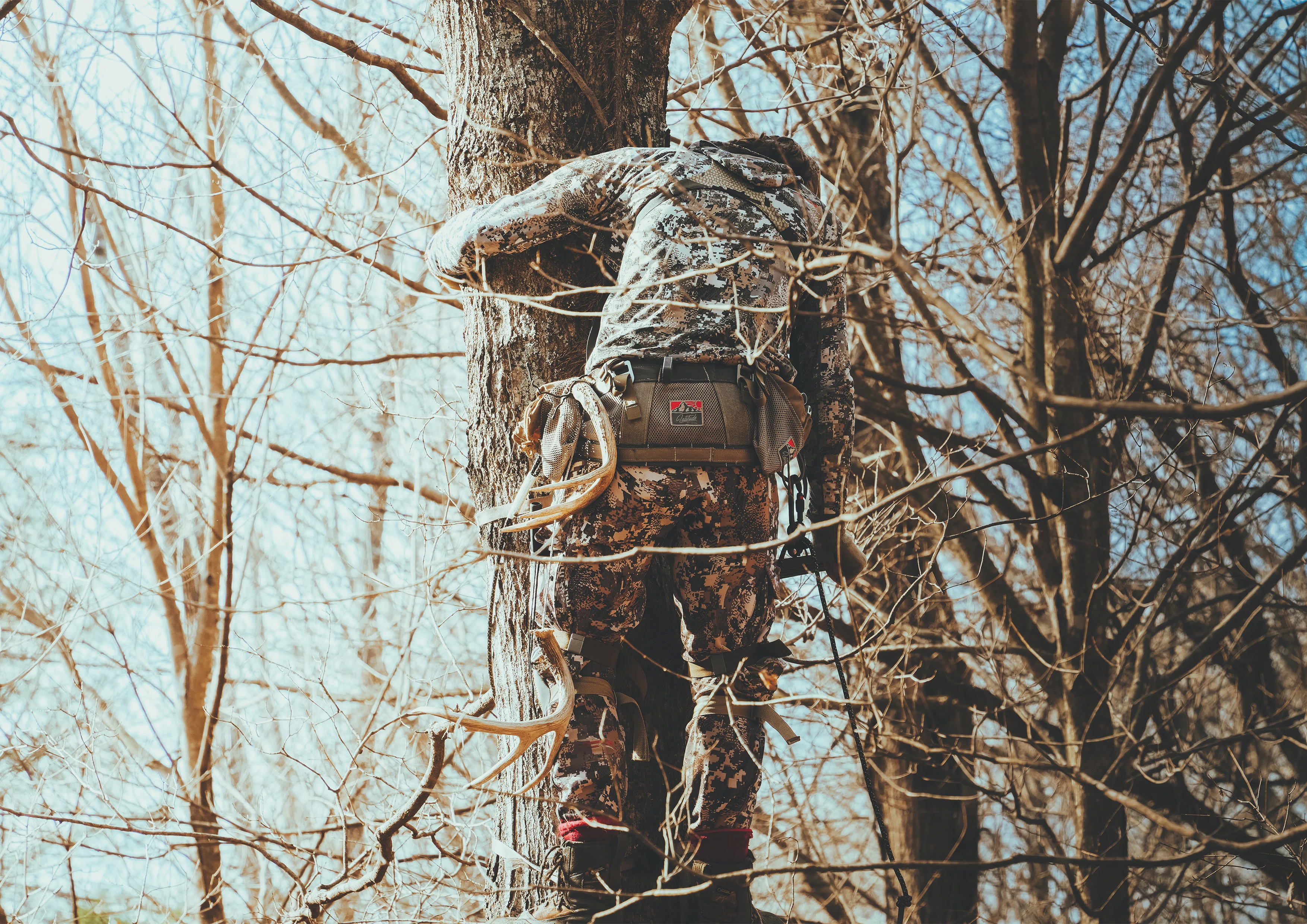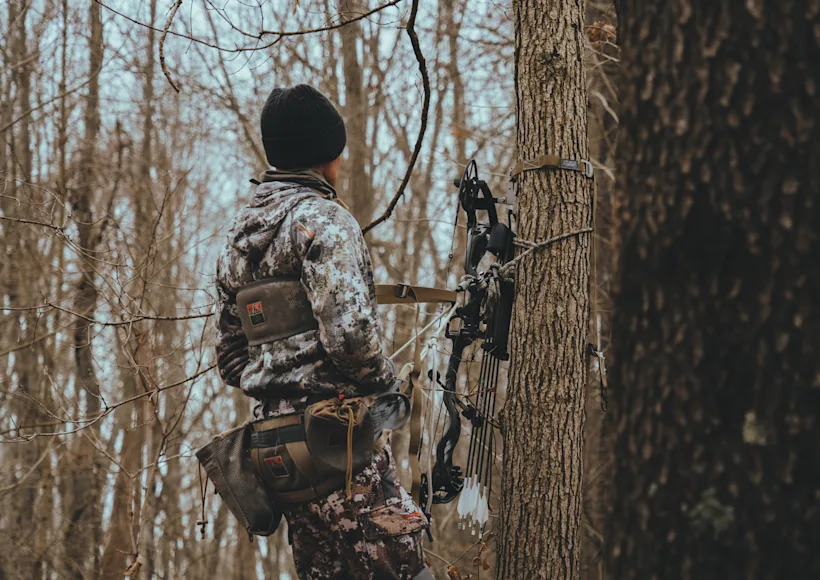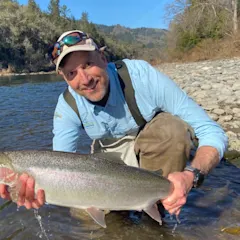Before last fall, my deer season prep and even my bowhunting activity had fallen into a rut. I found myself defaulting to the same stand locations I’ve been hunting for years. I was sitting for whitetails, not hunting for them. I was still seeing deer, and still getting shot opportunities, but I knew I could do better. So last summer I left my comfort zone and committed to a different tactic: saddle hunting.
If you are someone who is used to hunting from hang-ons, climbers, ladder stands, and maybe even box blinds, you may have some hesitation about climbing up a tree in a saddle. I know I did. The gear seemed much more complicated than my hang-on and ladder stands. Plus, a full saddle setup can be expensive and requires extra time at the start and end of every hunt. Not to mention my biggest concern—could my aging body and knees, worn from decades of running, handle the physical demands?
But the potential benefits, including mobility, safety, and versatility, outweighed my concerns. So last fall I saddled up to see what all the fuss was about. As it turns out, saddle hunting was just what I needed to reignite my passion for bowhunting. I had my best bowhunting season in years, spending more time in the woods and enjoying more encounters per hour of hunting than I’ve ever experienced. Here are six reasons you should consider hunting from a saddle this fall.

1. Mobility and Versatility
The primary benefit of hunting from a saddle is the increased mobility and versatility. You get all the advantages of hunting out of a hang-on or climber set, but with the ability to quickly and quietly move on a moment’s notice. Climbers are, by definition, mobile. But they can be heavy, bulky, and require straight trees with no limbs. A saddle is the better climber, and I predict climbers are headed the way of the buggy whip.
Hang-on stands and sticks can work OK for mobile hunting, and I’ve done it plenty of times over the years. But let’s face it, most of us are not carrying hang-ons and sticks and setting them up and pulling them down every time we hunt. We’re setting up our stands (sometimes several of them) before the season and, often, leaving them in the same place all fall.
Yes, it’s nice to be able to walk to your set wearing your harness and to be hunting in a couple of minutes. But it’s even better to be able to tailor your position to the day's conditions. There are trade-offs, however. My starter saddle kit, which includes an entry-level saddle, some inexpensive Hawke climbing sticks, and a moderate-sized standing platform, weighs in at a fairly stout 21 pounds. And it takes me about 10 minutes to be hunt-ready once I get to my tree. But the extra time and weight are worth the versatility it offers. Plus, you can buy more lightweight options for easier transportation.

2. Full 360-degree Coverage
One of the disadvantages of hunting from a stand affixed to a tree is that you will have a no-shoot zone. It’s simply physically impossible to cover 360 degrees, especially when bowhunting a traditional stand. That's not the case when saddle hunting. Because you are tethered facing the tree, you can rotate around the tree for 360 degrees of coverage. Yes, you still have to consider the wind and need to set up accordingly. But with a saddle, you no longer have to say, “He came in behind me and I couldn’t get a shot.”
Another advantage of being able to move around the tree? You can keep the tree between you and the deer for extra cover. The key to taking advantage of that 360-degree shoot zone is to spend plenty of pre-season time practicing moving around a tree and shooting at targets at all angles. There’s no need to climb high for that practice, either. Practice with a buddy and take turns with one of you shooting and the other retrieving arrows and moving targets.
3. Ease of Operation
I was initially intimidated by the extra gear and how to use it. What’s a bridge? What’s a dump bag? What’s a self-ascender? Fortunately, it only takes a little practice to understand the setup and take-down process. And once you figure it out, you'll find that climbing up a tree in a saddle isn't too hard, and the benefits can take your bowhunting to the next level.
There are vast resources to help you learn how to use a saddle, from online how-to stories to beginner guides to YouTube videos. That kind of research helped me, but it was practicing climbing and descending my next-door neighbor’s oak tree that made everything click. If you can figure out how to set up a hang-on set or use a climber, you can figure out how to safely and effectively use a saddle.

4. Safety
I’ll admit it was a weird feeling the first time I fully leaned back in my saddle, trusting everything to my setup. (And I was only 4 feet off the ground during a practice session!) But the reality is that saddle hunting done correctly is maybe the safest way to hunt from an elevated position. That’s because when you hunt from a saddle, you are connected to the tree from the moment your feet leave the ground until the moment they are back on the ground at the end of the hunt. You use a lineman’s harness while ascending and descending, and are tethered to the tree when hunting.
Many treestand hunters, myself included, use so-called lifelines from the ground to above a hang-on stand so we can be clipped in when climbing and descending. Still, because there is some slack in the safety harness tether, a fall can produce a jolt and possible injuries. With a saddle, you are always under tension.
Not only are saddles safe, but they are also comfortable. It’s different from sitting in a big hang-on or ladder with a cushy padded seat, but plenty of hunters pull off all-day hunts in saddles. My days of all-day sits are largely behind me, but my typical three- and four-hour sits in a saddle are a breeze.
5. Cost
A saddle kit can require a significant initial investment. An entry-level kit, including the saddle, climbing sticks, a standing platform, ropes, carabiners, and other accessories, will start at about $500. Upgrading to super lightweight standing platforms and sticks can push the cost of a saddle kit over $1,000. That said, setting a couple of hang-on and ladder stands can quickly top that number.
One way to save some money is to keep an eye out for used gear. Most used saddle gear I’ve come across is entry-level stuff being sold by hunters who tried saddle hunting and loved it so much they upgraded their kits. Because I’m upgrading to lighter gear from Latitude Outdoors this fall, someone in my area is going to get a killer deal on my perfectly functional starter kit. Many of the companies selling saddles these days offer handy buying guides on their websites to help hunters identify the appropriate gear. Some make it super easy by offering all-inclusive kits at various price points.
6. Security and Stealth
Have you ever arrived at your hang-on set to find out that you no longer have a hang-on set? I have, and it’s not a good feeling. And that was on private land. If you hunt public ground, the only way to ensure you don’t lose a stand to thieves is to take the stand with you after every hunt, like you do with a saddle.
Saddles can also be a great option when hunting private ground where you and/or the landowner prefer to keep a low profile. One of my spots is a 100-acre private tract where the owner is happy to let me hunt, but whose teen daughter is less enthusiastic about the idea. I use a saddle exclusively, so it's like I'm not even there.


